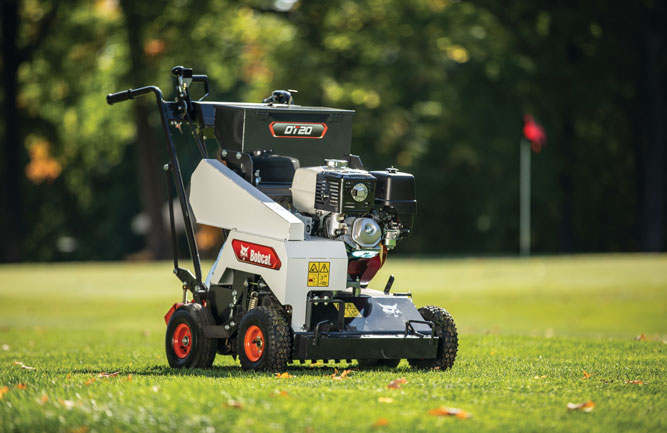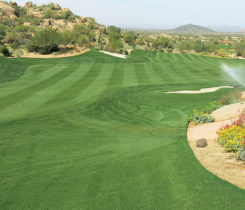Winding down the bermudagrass season in preparation for overseeding
Question: What should a superintendent be thinking about right now in preparation for overseeding?
A successful overseeding program relies heavily on a well-developed thatch management program. Thatch control is a yearlong process. At this point most superintendents should be wrapping up their thatch-control activities. Their efforts, along with the cooler weather, will be easing the bermudagrass toward dormancy. If the thatch control isn’t completed by now, there isn’t much that can be done now to manage thatch.
Question: Assuming the thatch control is completed, what steps can a superintendent take to ease the bermudagrass into dormancy?
First, for central Florida we suggest no nitrogen fertilizer after mid-August. Let the bermudagrass take its cues from the shorter day length and cooler temperatures to decrease leaf growth and start to enter dormancy.
Second, raise the mowing height on all areas of the golf course. A small change in mowing height will improve bermudagrass health whether overseeding or not. The higher mowing height will lead to more leaf area which will provide the plants with more carbohydrates and a larger root system. Most golfers will not notice a slight increase of about 0.03 inches on putting greens at this time of the year. Since the bermudagrass is growing slowly this time of year naturally, a slight increase in mowing height is easier to accommodate.
Question: What tips do you have for successfully overseeding greens?
Look at the calendar and note your planned overseeding date when planning the last preemergence herbicide application to make sure that all preemergence herbicides have dissipated by the time you plant.
Water management is extremely important for a successful overseeding, especially in the first 7 to 14 days after seed germination. The challenge for superintendents is to keep the surface moist without being too wet. Too much water and the seedling turf is very susceptible to diseases. Too little water, the seedlings dry out and die.
Raise the mowing height for the first 14 days after the seedlings emerge. This will give the seedling turf a chance to develop a root system and become established. After about 14 days the mowing height can be gradually lowered.
Keep the reels and bed knives sharp. New seedlings aren’t anchored in the soil very well. A slightly dull mower can tear out the seedling turf rather than cut it. If the mower tears out the seedling turf plants, a poor stand will result that looks bad and plays poorly.
About one week after seed germination, apply a foliar nitrogen source at a low rate using a nitrogen source with a low burn potential. Using a low rate of nitrogen is important to not stimulate bermudagrass growth. The goal is for the bermudagrass to go dormant. Once the bermudagrass is dormant, the overseeded turf stand can be fertilized at higher rates to encourage the growth and development of the overseeded turf.
Some superintendents topdress right after seeding to enhance seed to soil contact and enhance establishment. It is important to carefully manage topdressing application in the weeks after germination to minimize damage to the seedling turf. Wait until the seedling turf has developed a root system and is well anchored before topdressing.
Question: Anything else to add?
Believe it or not, it is important to begin planning for the transition back to bermudagrass in the spring. Coordinate golf events with the planned time to remove the overseeded turf. Holding overseeded turf too long in spring increases the risk of damaging or killing the bermudagrass base.
Jason Kruse, Ph.D., is an assistant professor of turfgrass science at the University of Florida. Jason’s research focuses on turfgrass fertility and management. Jason can be reached at jkk@ufl.edu.










